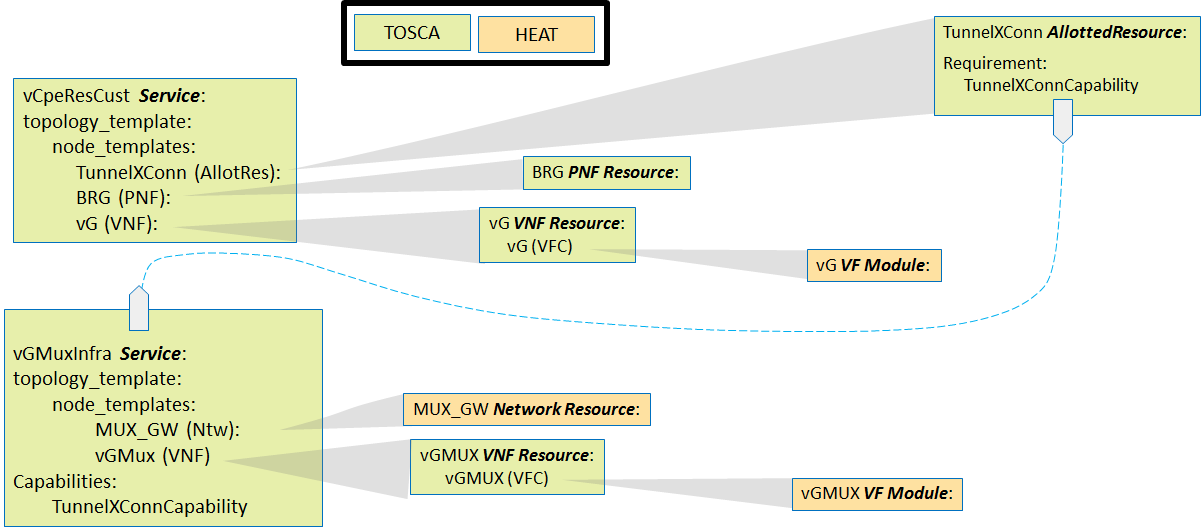...
In the "real world", the vDHCP, vAAA, and vDNS+DHCP functions would each be deployed separate of each other. However, because as "Core Infrastructure" they provide only a generic supporting function for this use case and are not integral to the purposes of this use" case, it is less critical that we model these functions as we would find them in the "real world". Hence we will take this opportunity to demonstrate a more complex VNF by modeling this functionality as a single VNF comprised of three VMs, packaged into a single HEAT template.
We will model a vCpeCoreInfra_Heat Service that is comprised of this complex VNF as well as two networks:, the "CPE_PUBLIC" and the "CPE_SIGNAL" networks. Thus, a request into ONAP to create a new instance of vCpeCoreInfra_Heat Service in a particular cloud region will result in an instance of the CPE_PUBLIC network and the CPE_SIGNAL networks being instantiated in that cloud region using the CPE_PUBLIC_HEAT and CPE_SIGNAL_HEAT HEAT templates respectively, as well as an instance of the single VNF being instantiated in that cloud region using the single VNF HEAT template.
From a modeling perspective we will leverage the concept of "VF Module" (analogous to the concept of ETSI Virtual Deployment Unit, or VDU) to capture the "unit of deployment" within a multi-VM VNF. Thus, we will model the this HEAT template as a single vCpeCoreInfraVnfs_H VF Module.
In the "real world" the network between the BNG and the vGMUX would likely be a shared network that multiple BNGs could use to communicate to multiple vGMUXs, and hence it is reasonable to model that network as not being part of the same Service (and Service instance) as the BNG or the vGMUX. Hence we will model it as a separate Service which can be instantiated in a given cloud region independently of, but of course prior to, the VNF instantiation.
The network between the BRG and the BNG is specific to a particular BNG instance, and thus it is reasonable to model it as part of the same Service (and Service instance) as the BNG.
As a Release 1 ONAP "stretch goal", we will also attempt to demonstrate how a standalone general TOSCA Orchestrator can be incorporated into SO to provide the "cloud resource orchestration" functionality without relying on HEAT orchestration to provide this functionality. As such we will model the "vCpeCoreInfra" Service in a manner that does not leverage HEAT templates, but rather as pure TOSCA.
...




